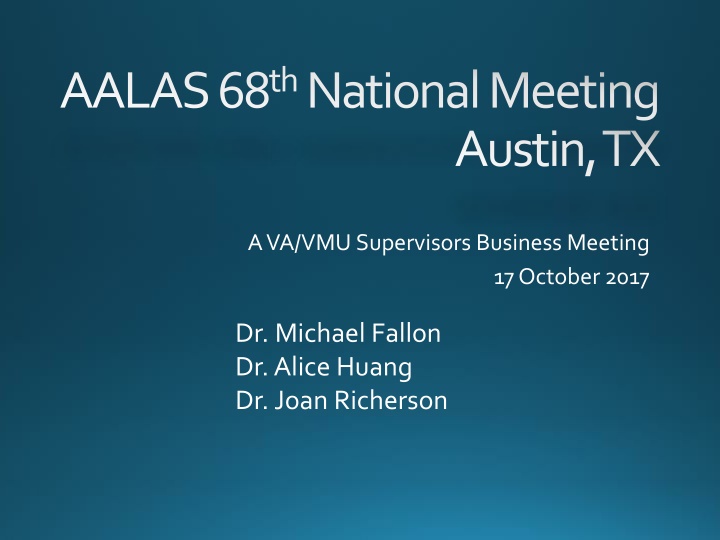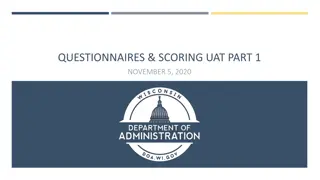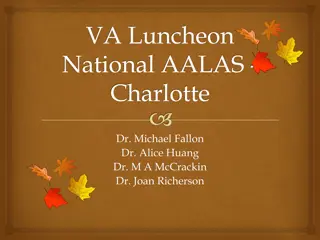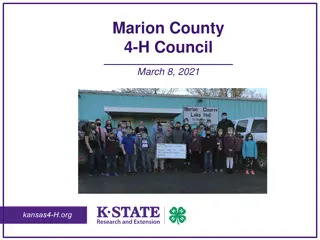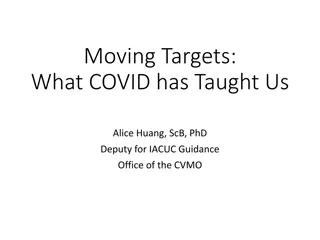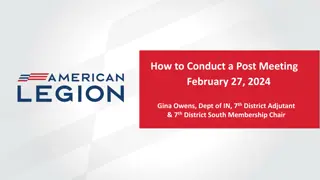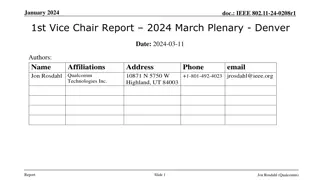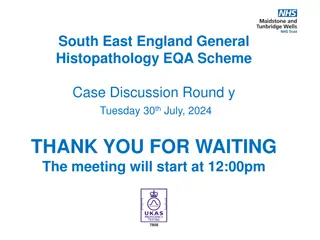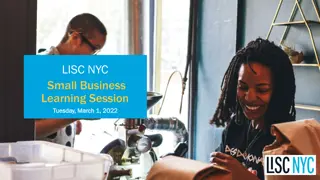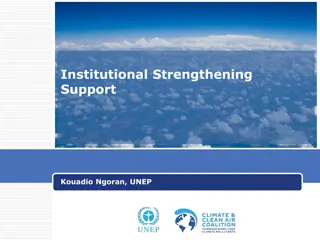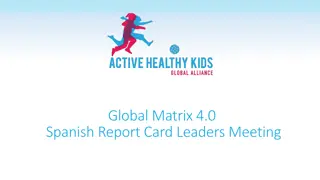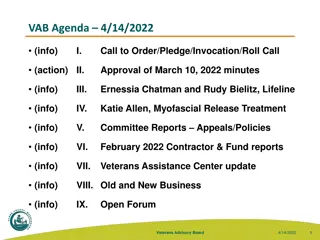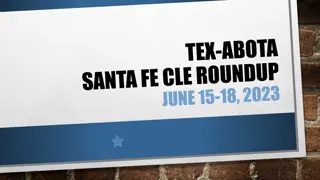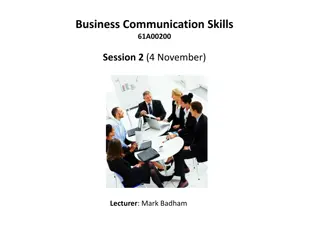Insights from AALAS 68th National Meeting Business Session
Delve into the key discussions and actions taken at the AALAS 68th National Meeting Business Session, including ensuring oversight in research programs, lessons learned, the importance of local actions, transparency, and accountability. The case of investigator negligence and the IACUC's decision regarding animal welfare protocols are also highlighted.
Download Presentation

Please find below an Image/Link to download the presentation.
The content on the website is provided AS IS for your information and personal use only. It may not be sold, licensed, or shared on other websites without obtaining consent from the author.If you encounter any issues during the download, it is possible that the publisher has removed the file from their server.
You are allowed to download the files provided on this website for personal or commercial use, subject to the condition that they are used lawfully. All files are the property of their respective owners.
The content on the website is provided AS IS for your information and personal use only. It may not be sold, licensed, or shared on other websites without obtaining consent from the author.
E N D
Presentation Transcript
AALAS 68thNational Meeting Austin, TX A VA/VMU Supervisors Business Meeting 17 October 2017 Dr. Michael Fallon Dr. Alice Huang Dr. Joan Richerson
What Has Consumed the Office of the CVMO Over the Past Year?
VA Actions to Ensure Oversight Expand secondary review process to include all canine protocols Increase frequency of AAALAC evaluation of canine research programs Enhance documentation of why the proposed work is scientifically necessary
Local Actions Needed Doing Nothing is Not an Option
Transparency and Accountability are Key http://www.sciencemag.org/news/2017/07/ woo-public-europe-opens-animal-experiments -us-less-transparent
While the IACUC agreed that the investigator was negligent in this particular situation, he has a long and consistent record of very conscientious attention to animal welfare, and no harm was in fact done to the animal. He identified the problem himself and brought to it to the IACUC s attention, and he has already put into place new procedures for for his research team, so the IACUC decided that it will be sufficient just to have him amend his protocol, and there is no need to require retraining. 7
While the IACUC agreed that the investigator was negligent in this particular situation, he has a long and consistent record of very conscientious attention to animal welfare, and no harm was in fact done to the animal. He identified the problem himself and brought it to the IACUC s attention, and he has already put new procedures for into place for his research team, so the IACUC decided that it will be sufficient just to have him amend his protocol, and there is no need to require retraining. 8
The IACUC discussed whether negligence was involved, and decided that the investigator s long record of careful attention to animal welfare and his responses to the situation show that he understands the problem and has taken appropriate corrective actions, so the matter will be considered resolved after an amended protocol is approved. 9
Be Prepared for Phone Calls Be polite and respectful Take contact information for response Do not provide any personal information (names, titles, phone numbers, office locations) Document the call Contact office of the CVMO for coordination
Do Not Leave a Vacuum for Others to Fill Why is there a vacuum? Allegations are effective, even if false Poor default appreciation for research https://www.washingtonpost.com/news/wonk/wp/2017/06/15/seven- percent-of-americans-think-chocolate-milk-comes-from-brown- cows-and-thats-not-even-the-scary-part/?utm_term=.9db9280e9f08 Lack of interest in subtleties and complexity expensive waste Start filling the vacuum: Info on R&D website https://www.research.va.gov/programs/animal_research/default.cfm
Your Stories are Needed Fact Sheet about current local research Write for distribution to the public Update regularly Local information for reference For internal use List of Publications Stories: what good has come of local research Write to capture public interest Send to CVMO for review
Accuracy and Completeness Know what you don t know Go to the source for what you need to know Check back with your sources about what you plan to say Work as a team local and central office research and communications personnel Don t make anything more definite than you have evidence for
All Documents Are Public The truth, the whole truth, and nothing but the truth Make it understandable to the public Protocols explain why the questions can only be answered By research with animals With the species proposed With the specific procedures proposed
Is it necessary? New IACUC non-scientific member, Sperry Blackburn -Attorney As an attorney he accepts very few things at face value Sperry has the same attitude about reviewing animal use protocols
Is it necessary? New protocol to be reviewed by the IACUC A mouse model of arrhythmogenic right ventricular cardiomyopathy/dysplasia (ARVC/D), a heritable cardiomyopathy. The investigator stated that he planned to use heterozygous Dsp-deficient mice because they are the best model of human ARVC/D and his previous work was performed using these mice. Is this justification adequate?
Is it necessary? With a little help from Google, Sperry discovered: Six other mouse models besides the Dsp-deficient mice Zebrafish model Transgenic rabbit model Spontaneous dog model Fruit fly model
Is it necessary? Sperry voiced his concerns that the investigator s justification for the use of Dsp-deficient mice was inadequate. Other IACUC members agreed with Sperry. The IACUC Chair said the investigator may have valid reasons for the model selected but they should be clearly stated in the justification. The IACUC voted and required a revised justification that clearly detailed the rationale for the selected model.
Is it necessary? The investigator s revised animal use justification: Acknowledged in vitro studies have been conducted but in vivo studies are required to address complex questions. The Dsp-deficient mice most closely mirror the human disease. The other mouse models only partially mimic the clinical ARVC/D phenotype. Zebrafish and fruit fly hearts are very different from the human heart and less representative of the human disease.
Is it necessary? The rabbit and canine models involve specific mutations, which may make it difficult to obtain a sufficient number of animals, and both species are more sentient than rodents. Multiple literature citations were included. Collectively, heterozygous Dsp-deficient mice were chosen because these mice closely model human ARVC/D, previous studies were conducted with these mice, mice are a lower sentient animal, and these mice readily available.
Is it necessary? When the IACUC requires a clear rationale for why the use of animals is necessary, we earn the public s trust.
